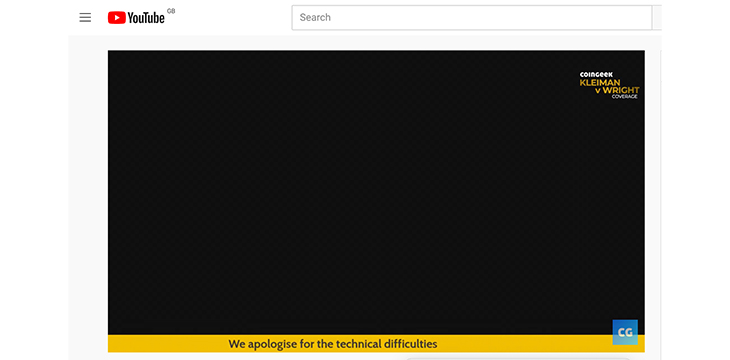Nobody has asked for my suggestions about how to improve the American legal system.
But what has all the money, the time, the work, the hotel bills, the footage, the angst around the Kleiman v Wright trial really achieved?
I’ve been following it as closely as I can from afar and if you asked me to summarise the story of Craig Wright and the beginnings of Bitcoin, I’m not sure how much more I know now for sure than I did before Judge Beth Bloom welcomed the jury into her courtroom way back on November 1.
Ask me about the American legal system, and, yes, I’ve absorbed a fair bit: I know about the different kinds of decisions juries are asked to make in civil and criminal cases; I know what an Allen charge is; and I know how you can sound like you know what you’re talking about by calling it “the cross” instead of cross-examination.
I also know what Kurt Wuckert Jr’s hotel room looks like—in fact, I practically feel I’ve lived in it with him—until he had to broadcast from the back of a car because the room could not be extended any further thanks to an art fair coming to Miami. Connectivity in the car proved even worse than at the hotel (see above): “Is this performance art?” and “KURT LIVING OUT OF HIS CAR” appeared in the chat from his worried fans.
But back to the law. This was a civil case. Nobody was going to be found guilty or sent to prison. It was a super-large scale version of somebody claiming a refund from a trader who hadn’t delivered on their promise. Anyone can bring a case against anyone else, and the court is there to settle disputes by examining the facts—in front of a jury in this case—and applying the law.
The facts were voluminous, complicated and disputed. Not only did the jury have to try to decide what happened, sometimes many years ago—and in Australia!—but how what they worked out had or hadn’t happened might or might not be relevant to the complicated charges.
And they were asked to make those decisions by listening to a long series of stuttering examinations punctuated by a stream of technical interruptions:
Vel Freedman (for the plaintiffs): “And the amount of those credits was in excess of $10 millions?”
Amanda McGovern (for the defence): “Objection. Foundation. Could you – I’m having a tough time hearing the question.”
Judge Bloom: “Move your mic up a little bit Mr Freedman. The object is over-ruled. I’ll allow it.”
The Witness: “The value is not that amount. It is an offset against other tax.”
Hours and hours of that kind of thing where, if you’d been able to filter out the interruptions, you might have had a chance of following the conversation, but—on paper at least—it feels like trying to concentrate on a high-level discussion while hearing the neighbours fighting next door.
Most people following the case, like me, don’t have a direct financial interest in it. We’re not, like Ira Kleiman, trying to claim money or, like Dr. Wright, denying that we owe money. But I, at least, was hoping that the process of settling the dispute would shed light on the very interesting history of Bitcoin.
And it has, in a way, through all the evidence that’s been presented to the court. But if the pieces of the jigsaw have been produced—by both sides, to try to support their own lines of argument—there hasn’t been anyone interested in fitting them together and building up an easy-to-understand picture. Instead, as soon as one set of lawyers starts putting some pieces together, the other side does its best to unpick them and maybe sweep them off the table and onto the floor.
What’s needed, for the purposes of public enlightenment, is something more like a public enquiry, with an independent chairperson and maybe an expert committee in support, whose only job is to assemble the facts into a fat, authoritative report representing their considered version of the true story.
The past few weeks in Miami have been frustrating because in all probability every important piece of the jigsaw has been filed in evidence, but there’s been no way of creating a beautiful, finished picture from them.
I feel for the poor jury. Not just for the long hours and the many days they have had to spend in court, but for having been presented with a nightmarish set of questions at the end and told to sit in a room until they agree on the answers. If I was one of them, I’d be having horrible flashbacks to the worst exam papers I ever faced. Try this:
Do you find that any of the following claims by W&K Info Defense Research, LLC are barred the statute of limitations? (sic)
Conversion
Unjust Enrichment
Fraud
Constructive Fraud
Breach of Fiduciary Duty (answer Barred or Not Barred to each one)
Maybe that would make a good question in an exam after a few years at a top law school. But for a group of people plucked at random from the blameless population of Miami? I don’t think so.
Check out all of the CoinGeek special reports on the Kleiman v Wright YouTube playlist.
Source: Read Full Article
